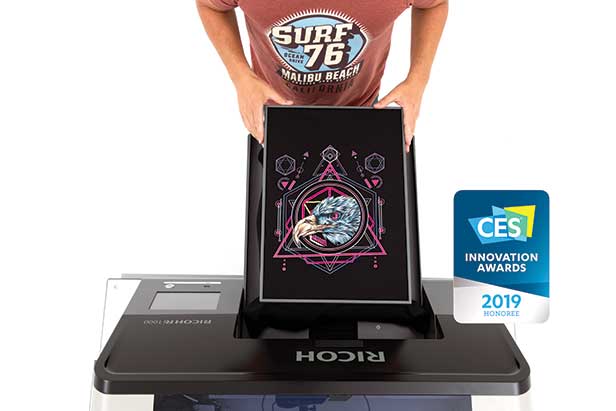August 13, 2019
When Should You Invest In A New DTG Machine?
Ask these three questions first.
Perhaps you’ve been in this scenario: Your car is running poorly and the mechanic suggests a laundry list of repairs with a price tag that makes you queasy. You’re then left to decide: Is the car worth fixing or is it time to invest in a new model?
This is exactly the crossroads many decorators face with their DTG equipment. Of course, the answer isn’t a one-size-fits-all formula, as each machine sees a different amount of business. But there are some general guidelines you can follow.
Ask yourself the following questions to determine whether you should repair or replace your machine:
1. Does the manufacturer still sell your model?
If your product is no longer being sold, the chances of you receiving worthwhile and cost-effective repair is limited. “Most manufacturers will fix a machine that they no longer offer at retail,” says Paul Crocker, marketing manager at Anajet (asi/16000). “However, they don’t always stock the necessary parts, and there’s no real regulation on the cost of the parts once they’re not being made anymore.”
In this case, if your old machine continues to have issues and you’re frequently pouring thousands of dollars into repairs, it may be worth paying for a newer model with more stable technology that can deliver a consistent and reliable product.

The RICOH Ri1000, the latest DTG printer model from Anajet (asi/16000), includes a built-in self-maintenance program.
2. Is the problem isolated or ongoing?
The majority of DTG issues Crocker has seen during his five years at Anajet are related to ink flow – or rather, the lack of ink flow. Decorators must keep DTG machines on and running in order to maintain them; otherwise, air can get trapped in the tubing causing ink to dry out and clog print heads. “The most common issues we see are clogged print heads which cost about $1,500 to replace,” Crocker says. “If this is a one-time issue, it’s probably worth replacing a few print heads instead of buying a new $20,000 machine. But if this issue continues happening, it signals to us that the customer could be failing to properly maintain the DTG printer, or the machine has larger issues that haven’t been discovered yet.”
Crocker notes that some decorators buy printers from eBay and other online secondhand sites without knowing the history or condition of the machine, and with this type of printer, isolated issues can quickly turn into systemic problems. “If you have an ink flow issue, whether in the head or somewhere else, and you put it to the side as you wait to repair it, you can cause a ripple effect into other parts of the machine,” Crocker says. “What began with you needing a print head replacement could morph into needing a full re-plumbing of the tubing because the problem has spread.”
3. Am I following the correct maintenance program?
Although it seems counterintuitive, the more you run your DTG machine, the longer it will last. Newer models like Anajet’s RICOH Ri1000 have built-in maintenance programs that allow decorators to keep the machine on with ink pumping through the system, even when they’re not printing. While this sounds harsh on the energy bill, it saves you from buying a new machine sooner than necessary. “Maintenance is the most important part of having a DTG printer,” Crocker says. “We give all of our customers email tutorials and manuals to show them exactly what’s necessary to prolong the life of the machine. Inevitably, there are always decorators that don’t follow the protocol and ruin machines within a few months of buying them.”
If a decorator is doing all that’s required to maintain equipment but is still running into problems, then it’s time to evaluate the value of the machine as a whole and decide what makes sense for the business moving forward.

Product Hub
Find the latest in quality products, must-know trends and fresh ideas for upcoming end-buyer campaigns.
